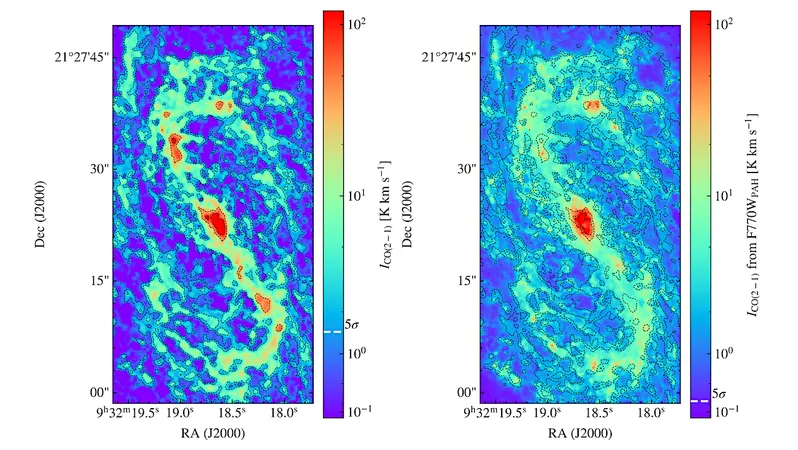
Revolutionary Tiny Magnetic Discs Pave the Way for Non-Invasive Brain Stimulation
2024-10-11
Author: Daniel
Introduction
In a groundbreaking study, MIT researchers have unveiled tiny magnetic nanodiscs that could transform the landscape of brain stimulation therapies. Unlike traditional methods that rely on surgical implants or genetic modifications, these innovative nanoparticles, measuring just 250 nanometers in diameter (about 1/500th the width of a human hair), can be injected into specific areas of the brain and activated externally using magnetic fields.
Study Overview
Published in the prestigious journal *Nature Nanotechnology*, the research was led by Polina Anikeeva, a professor at MIT, alongside graduate student Ye Ji Kim and a dedicated team from MIT and Germany. Their findings hold significant implications for biomedical research and, with further testing, could eventually lead to clinical applications.
Advantages Over Traditional Methods
Conventional deep brain stimulation (DBS), a common treatment for neurological conditions like Parkinson's disease and obsessive-compulsive disorder, is often limited by the complexities and risks associated with surgical procedures. The advent of these nanodiscs could offer a much safer alternative, providing targeted brain stimulation without the need for invasive techniques.
Developing a Solution
Over the past decade, various non-implant methods have emerged but often fell short in precision or depth of stimulation. Anikeeva's team sought a solution by utilizing magnetoelectric nanomaterials capable of converting magnetic signals into electrical stimulation – a feature that had previously been confined to genetically modified methods unsuitable for human subjects.
Innovative Design of Nanodiscs
Kim's hypothesis led to the synthesis of these novel nanodiscs, comprised of a magnetic core and a piezoelectric shell. The core's magnetostrictive properties allow for shape alteration when magnetized, generating electrical signals that stimulate nearby neurons. The disc shape of the particles significantly enhances the stimulation efficacy compared to earlier spherical designs, boosting the magnetostrictive effect by over a thousand-fold.
Experimental Validation
Initial experiments involved applying the nanodiscs to cultured neurons, which responded to magnetic pulses without genetic modification. Further, they demonstrated the discs' capabilities by injecting them into the brains of mice, where a nearby electromagnet could remotely activate the particles. This promising technique elicited noticeable impacts on neuronal activity and, intriguingly, could influence behavior.
Targeted Brain Regions
Notably, the team successfully stimulated the ventral tegmental area, a brain region tied to reward processing, and the subthalamic nucleus, critical for motor control. These findings suggest that the nanodiscs could effectively replicate the results of conventional electrical stimulation methods while significantly reducing the risk of associated foreign body reactions.
Challenges and Future Directions
Despite the promising advancements, challenges remain. The team must enhance the conversion of magnetic effects into electrical impulses to fully realize the potential of these particles. While they have achieved a significant increase in magnetostrictive capabilities, translating that efficiency into electrification remains an ongoing focus.
Moving Toward Clinical Applications
The researchers recognize that, while the nanodiscs show potential for animal model research, transitioning to human clinical applications demands comprehensive safety evaluation—a process typically outside the expertise of academic institutions.
Conclusion
The implications of this research are staggering. As scientists continue to explore this frontier, we may be one step closer to a future where non-invasive brain stimulation therapies can be safely and effectively administered, potentially revolutionizing treatment for a myriad of neurological disorders. Stay tuned as we track the nuanced developments from this pioneering study—this is just the beginning!





 Brasil (PT)
Brasil (PT)
 Canada (EN)
Canada (EN)
 Chile (ES)
Chile (ES)
 España (ES)
España (ES)
 France (FR)
France (FR)
 Hong Kong (EN)
Hong Kong (EN)
 Italia (IT)
Italia (IT)
 日本 (JA)
日本 (JA)
 Magyarország (HU)
Magyarország (HU)
 Norge (NO)
Norge (NO)
 Polska (PL)
Polska (PL)
 Schweiz (DE)
Schweiz (DE)
 Singapore (EN)
Singapore (EN)
 Sverige (SV)
Sverige (SV)
 Suomi (FI)
Suomi (FI)
 Türkiye (TR)
Türkiye (TR)